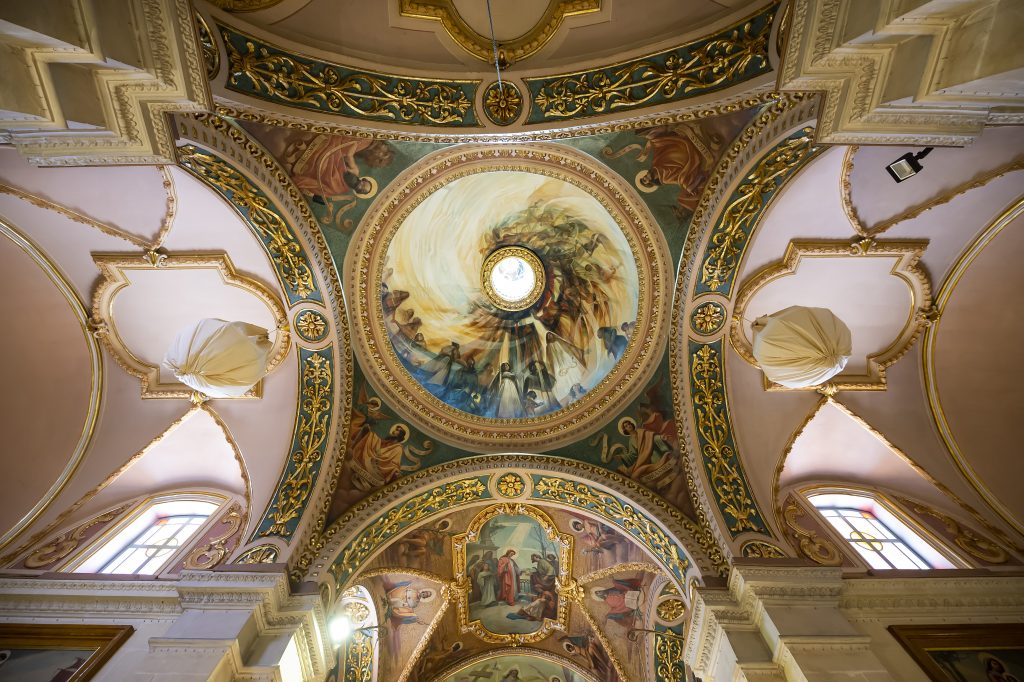The Parish / Church
Legend/interesting fact
Two booklets were compiled by Rev. Dr Joseph Bezzina for the Fondazzjoni ta’ Klula of Santa Lucija, Gozo. One of the booklets covers the prehistoric and medieval sites in the Santa Lucija area, while the other consists of a collection of local legends connected with this tranquil hamlet. A heritage trail through the village of Santa Lucija Gozo and its environs and ten singular stories from the village of Santa Lucija aim to promote the historical and cultural heritage of Santa Lucija, one of Gozo’s picturesque and characteristic villages.
Main religious festivities (eg village feast)
Santa Luċija Church in Gozo hosts a variety of religious feasts throughout the year. These celebrations include a procession with the Statue of Our Lady of Sorrows, held on the Thursday before Maundy Thursday. Another procession with the Holy Eucharist takes place at Santa Luċija Square during the Feast of Corpus Domini. The Triduum and Feast of Our Lady of Fatima are celebrated on the weekend closest to October 13th, featuring a procession with the statue and the impressive Fjakkolata event lighting up Għar Ilma hill with thousands of torches. The Solemnity of the Consecration of Santa Luċija Church is observed on November 9th, commemorating the church’s consecration in 1952.
The hamlet also honours the Liturgical Feast of Saint Lucy, its patron saint. This week-long celebration starts with a band march on the first Sunday of December, followed by more band marches, and the main feast occurs on the Sunday before December 13th. The feast day includes a Solemn High Mass, the Prayer of the Vespers, a procession with Saint Lucy’s statue, band marches, and fireworks. The festivities continue with Holy Mass, Benediction with the Blessed Sacrament, and veneration of Saint Lucy’s relic. Additionally, the Feast of Saint Lucy is celebrated on December 13th, with the church open all day for visitors to pray for her intercession, especially by those with sight problems as she is the Patron Saint of the visually impaired. Santa Luċija Church becomes a place of profound devotion and cultural significance throughout the year, attracting people from various countries seeking spiritual solace and connection.
Specific noteworthy art/religious pieces
Santa Luċija Church stands as a meticulously maintained sanctuary adorned with distinctive artifacts. Within its walls, a collection of paintings by the Maltese artist Ġużeppi Briffa captures one’s admiration. The dome’s vibrant artwork, completed in 2003-2004, is a creation of the local Gozitan artist Austin Camilleri. Among the ancient artworks, notable pieces include the central Altarpiece portraying Our Lady and Saint Lucy, a side painting depicting Saint Joseph accompanying the Blessed Mother and infant Jesus to Egypt, and another showcasing Saint Peter and Saint Paul.
An array of 18 statues, originally crafted by artist Wistin Camilleri for Saint George’s Church in Victoria during the early 20th century, now graces the three altars of Santa Luċija Church. These statues, procured later for this church, are presently undergoing restoration by artist and gilder Reuben Camilleri Cauchi.
The church houses a diverse collection of statues, including the Titular Statue of Saint Lucy sculpted by Wistin Camilleri in 1920, the Statue of the Sacred Heart of Jesus (1917), Our Lady of Fatima (1953), Saint Anthony, Saint Joseph created by Paul Aquilina, and the Sorrowful Mother crafted by Joe Cutajar Zahra in 1989. A recent addition to the church’s treasures is a painting depicting baby Moses rescued from the Nile, a creation of artist Mgr. M’Angelo Apap, generously donated and displayed in the Sacristy.
The Patron Saint & the Titular Statue
Lucia of Syracuse (283–304), commonly known as Saint Lucy, hailed from a devout Christian family in Sicily’s Syracuse. Losing her father early, she was nurtured by her mother, Eutechia. Eutechia insisted on her marriage to a Roman official, Pascasius, captivated by Lucy’s mesmerizing eyes. Lucy declined, having consecrated her life to the Lord. Eutechia fell ill; Lucy urged a pilgrimage to Catania, where Eutechia was healed. Grateful, Eutechia granted Lucy freedom to choose her path. Lucy shared her dowry with the poor. Learning this, Pascasius had her tortured and beheaded for her steadfast faith. Lucy died during the Diocletian Persecution and became Patron Saint of the Visually Impaired. She’s venerated by Catholics, Anglicans, Lutherans, and Eastern Orthodox. The local feast of Saint Lucy is celebrated on the nearest Sunday to December 13, her liturgical feast day. Artist Wistin Camilleri crafted the titular papier-mâché statue of Saint Lucy in 1920, showcased annually in a procession preceding December 13, now coupled with the Lucia procession, embracing the Festival of Light. Santa Luċija resonates with a vibrant ambiance, highlighted by the making of Lucia buns.
In 1916-17, Santa Luċija residents journeyed to Australia but were denied entry due to lacking documents. After praying for Saint Lucy’s intercession, they vowed a statue for Santa Luċija Church. Allowed entry, they commissioned artist Wistin Camilleri’s statue in 1920. In 1990, Bishop H.L. Mgr. Nicholas Ġ. Cauchi approved the statue’s procession through Santa Luċija. Għaqda Nar Armar 13 ta’ Diċembru formed, organizing and fundraising for the annual December feast.













